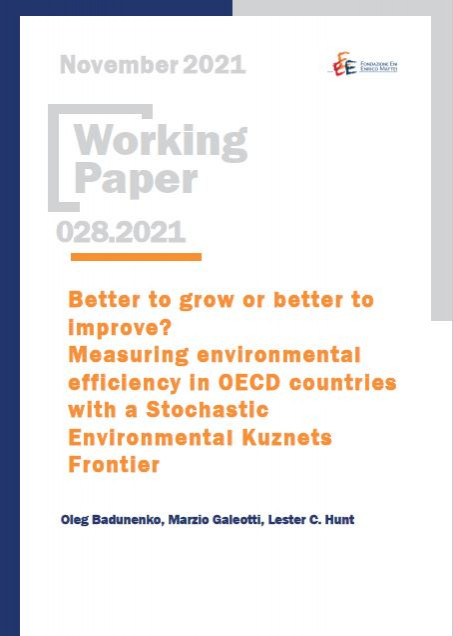Better to grow or better to improve? Measuring environmental efficiency in OECD countries with a Stochastic Environmental Kuznets Frontier

17.11.2021
Oleg Badunenko (Brunel University); Marzio Galeotti (University of Milan); Lester C. Hunt (University of Portsmouth)
O44, Q56, Q54, C13, C33
Environment and growth, Environmental Kuznets Curve, CO2 emissions, Panel data, OECD countries, Stochastic frontier approach, Stochastic Environmental Kuznets Frontier, Environmental Policy Stringency
The standard approach to the Environmental Kuznets Curve (EKC) holds that as a country develops and GDP per capita grows environmental degradation initially increases but eventually it reaches a turning point where environmental degradation begins to decline. Environmental degradation takes many forms, one of them being emissions of harmful gases. According to the EKC concept, a country can reduce emissions by ‘growing’. The standard approach implicitly assumes that a country emits as little as possible for its economic development, whereas in reality, a country might emit above the best attainable level of emissions. Therefore, emissions could be reduced before and after the turning point by becoming more environmentally efficient – i.e., ‘improving’ the emissions level. This article proposes a Stochastic Environmental Kuznets Frontier (SEKF) which is estimated for CO2 emissions for OECD countries and used to benchmark each country before and after the turning point differently, thus, indicating how a country could ‘grow’ and/or ‘improve’ to reduce its CO2 emissions. Additionally, we analyse the role of the stringency of environmental policies in reducing a country’s carbon inefficiency measured by the distance from the benchmark EKC and find widespread carbon inefficiencies that could be reduced by more stringent market-based environmental policies.
***
Suggested citation: O. Budanenko, M. Galeotti, L. C. Hunt, (2021), ‘Better to grow or better to improve? Measuring environmental efficiency in OECD countries with a Stochastic Environmental Kuznets Frontier’, Nota di Lavoro 28.2021, Milano, Italy: Fondazione Eni Enrico Mattei
